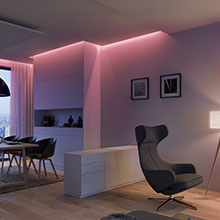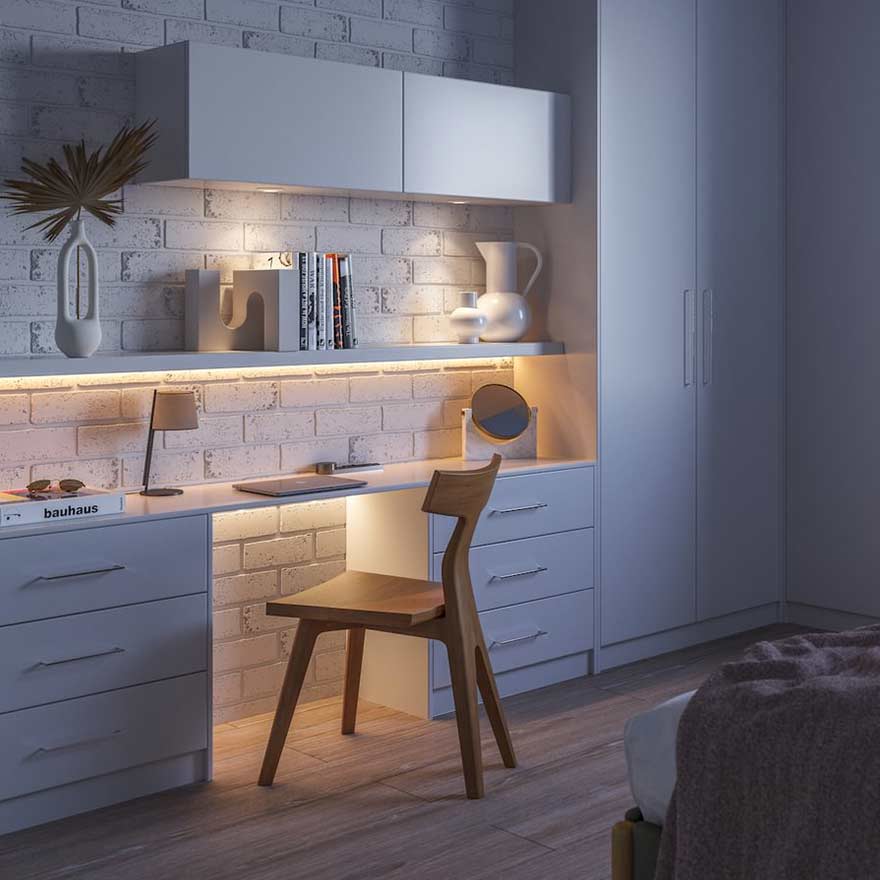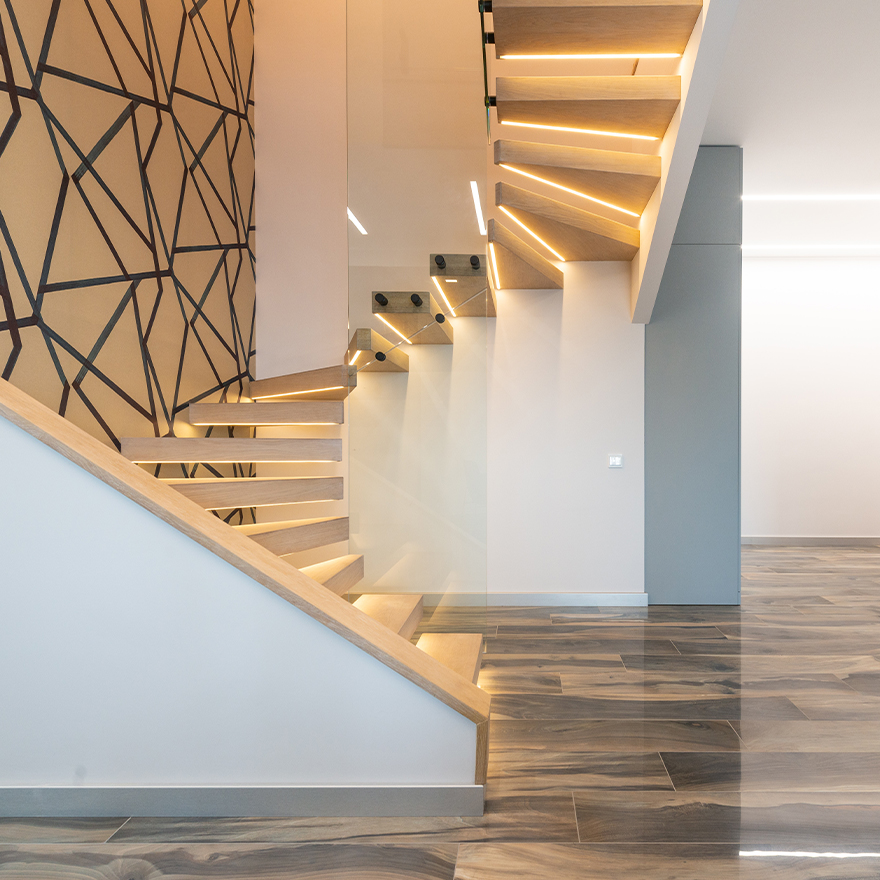The Key Role of Optimal Lighting
As furniture manufacturers, we understand the importance of creating products that not only look stunning but also contribute to the overall wellbeing of our customers. While design and craftsmanship take centre stage, we mustn’t underestimate the impact of lighting on personal wellbeing. In this blog, we will delve into the significance of using the best lighting to benefit our customers' health, with a particular emphasis on lighting in the kitchen.
Discover how illuminating their homes can enhance mood, productivity, and create an inviting environment.


The Power of Lighting on Wellbeing
Lighting has a remarkable influence on our daily lives, affecting our mood, energy levels, and overall sense of wellbeing. As furniture manufacturers, it is crucial for us to consider the impact of lighting on our customers. Studies have shown that well-designed lighting can significantly improve the ambiance of a space and enhance personal wellbeing.

Mood Enhancement
Proper lighting can significantly affect a person's mood. Bright and natural lighting, reminiscent of daylight, promotes feelings of alertness, positivity, and overall well-being. It can combat feelings of fatigue and uplift spirits. On the other hand, warmer and dimmer lighting can create a cozy and calming ambiance, promoting relaxation and stress reduction.
Circadian Rhythm Regulation:
Our body's internal clock, known as the circadian rhythm, regulates various physiological processes, including sleep-wake cycles. Exposure to natural light during the day helps maintain a healthy circadian rhythm, leading to improved sleep quality and wakefulness during the day. By replicating natural light patterns, such as using cool-white lighting during the day and warmer lighting in the evening, we can support our natural sleep-wake cycle and enhance overall well-being.
Productivity and Focus:
Well-designed lighting can enhance productivity and focus, especially in work or study environments. Bright, task-specific lighting provides optimal visual clarity, reducing eye strain and allowing individuals to concentrate better on their tasks. Adequate lighting in workspaces, such as office areas or workshops, can improve alertness, cognitive function, and overall performance.
Visual Comfort and Eye Health:
Insufficient or improper lighting can lead to eye fatigue, headaches, and discomfort. Glare from harsh or poorly positioned light sources can strain the eyes and impede visual tasks. By providing adequate, evenly distributed lighting, with attention to minimizing glare, individuals can experience improved visual comfort, reduced eye strain, and better eye health in the long run.


Emotional Wellbeing and Stress Reduction
Lighting plays a role in creating a pleasant and inviting atmosphere, which contributes to emotional well-being and stress reduction. Soft and warm lighting can evoke feelings of relaxation, comfort, and intimacy, perfect for winding down after a long day.
Additionally, well-lit spaces with good colour rendering can enhance the visual appeal of surroundings, positively impacting mood and overall satisfaction.

Safety and Orientation:
Proper lighting is essential for maintaining a safe environment. Well-lit areas reduce the risk of accidents, especially in high-traffic areas or potentially hazardous spaces like staircases or hallways. Adequate lighting also helps with orientation, allowing individuals to navigate their surroundings easily and with confidence.
By understanding and implementing lighting strategies that prioritize the well-being of individuals, we can create environments that support their physical, emotional, and cognitive needs.
Choosing the Right Lighting for Specific Areas
When it comes to selecting lighting for different areas of the home, each space has unique requirements and purposes. Let's focus on the kitchen, a central hub for culinary creations and family gatherings. Proper kitchen lighting is essential for functionality, safety, and creating a welcoming atmosphere.
Task lighting plays a critical role in the kitchen, providing focused illumination for activities like food preparation, cooking, and cleaning. Under-cabinet lighting, for example, can brighten countertops, making it easier to work with precision. Pendant lights above the kitchen island not only serve as functional lighting but also add a touch of elegance and serve as a focal point.

Additionally, the colour temperature of kitchen lighting should be carefully considered. Cooler colour temperatures, such as daylight or neutral white, promote alertness and enhance visibility for tasks. On the other hand, warmer colour temperatures, such as soft white, create a cozy and inviting ambiance, perfect for entertaining guests.
Creating a Harmonious Home Environment
In our commitment to providing exceptional furniture, we should also consider the holistic experience our customers have in their homes. By offering lighting solutions that prioritise both functionality and aesthetics, we can contribute to a harmonious living environment. Carefully crafted lighting designs, incorporating general, task, and accent lighting, can transform a space, highlight architectural features, and evoke desired moods.
 Moreover, as technology advances, we can integrate smart lighting systems that offer greater control and customisation. This allows our customers to adapt the lighting to their specific needs and preferences, further enhancing their overall experience.
Moreover, as technology advances, we can integrate smart lighting systems that offer greater control and customisation. This allows our customers to adapt the lighting to their specific needs and preferences, further enhancing their overall experience.
As furniture manufacturers, we have a unique opportunity to enhance our customers' lives through thoughtful design choices, and lighting plays a significant role in achieving this.
By prioritising optimal lighting solutions, particularly in areas like the kitchen, we can positively impact t their personal wellbeing, create inviting spaces, and contribute to their overall satisfaction with our products. Let us embrace the power of lighting to enrich the lives of our customers and provide them with a truly exceptional home environment.










